
Unlike certification for individual buildings, this designation evaluated sustainability and resilience efforts across the entire county, measuring progress in water resources, energy, land use, ecology, quality of life, transportation, and other categories.
What is LEED Certification and why is it important?
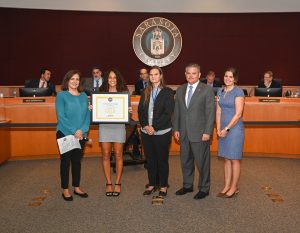
LEED, the world’s most widely used green building rating system, helps buildings, communities, cities, and counties by providing a road map toward high performance in key areas of social, economic, and environmental sustainability.
Sarasota County achieved Gold certification through the LEED Cities & Communities rating system for implementing practical and measurable strategies and solutions to improve community-wide sustainability and the residents’ standard of living.
The certification process, developed by the U.S. Green Building Council, a non-profit with a 30-year history of helping shape healthy, vital built environments, assigns points in nine categories: integrative process, natural systems and ecology, water efficiency, energy and greenhouse gas emissions, transportation and land use, materials and resources, quality of life, innovation, and regional priority.
LEED certification points and scoring
Sarasota received 65 points out of 110 possible to earn LEED Gold certification, including scoring maximum points for demonstrating achievements in Energy and Greenhouse Gas Emissions Performance (14/14), Resilience Planning (4/4), Transportation Performance (6/6), Quality of Life Performance (6/6), Natural Resources Conservation and Restoration (2/2), and more.
Here’s a closer look at how the county performed in each of LEED’s major scoring areas.
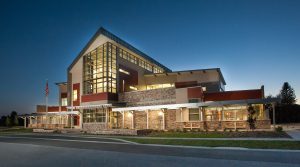
Integrative Process
The integrative process credit encourages high-performance, cost-effective, equitable project outcomes through an early analysis of the interrelationships among systems.
Sarasota County earned points for energy performance tracking for county owned buildings. Buildings are benchmarked through an energy database called Archibus Energy console. The energy database is used to track energy conservation measures across all the county buildings. Benchmarking metrics include; building name, account number, kilowatt hour (kWh) grand total, and energy cost.
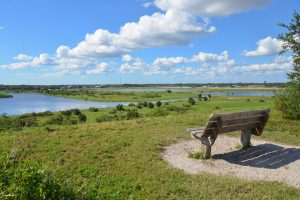
Natural Systems and Ecology
The natural systems and ecology credit assesses existing ecosystem conditions and services provided by ecosystems, built landscapes, and other open spaces to inform the county development along with conservation and restoration efforts.
Sarasota County received points for resilience planning through vulnerability and capacity assessments. The 2021 Sarasota County Unified Local Mitigation Strategy was developed as a multijurisdictional, multi-hazard strategy to involve the public, assess the hazards, determine the vulnerability, identify risks, set goals, and identify mitigation activities, and plan for natural and manmade hazards to Sarasota County and the jurisdictions therein. This plan identifies and analyzes a wide range of mitigation actions and projects for the natural and man-made hazards that may affect the jurisdictions encompassed by this plan. Projects range from public outreach to reducing the effects of natural hazards on new and existing buildings.
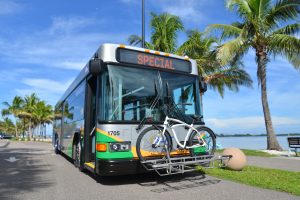
Transportation and Land Use
The transportation and land use credit encourages compact and mixed-use development, high level of connectivity within the county and encourages walking, biking, and transit use.
Sarasota County received points for access to quality transit among other things. Sarasota County Transit has developed a strategy for transit investments, building on its strengths, supporting regional connections, and—long term—transforming the image and role of transit. The Downtown Transfer Station is connected to more than three modes of transportation including bus, automobile, bike, and pedestrian. The 2021 Bicycle and Pedestrian Master Plan update demonstrates a commitment to the transit network being accessible via sidewalk and bicycle infrastructure to help achieve a more integrated multimodal transportation system.
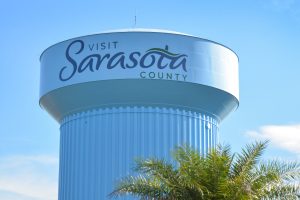
Water Efficiency
The intent of the water efficiency credit is to support water management, reduce freshwater consumption and encourage us to move towards a net zero water county.
Sarasota County achieved a water performance score based on the daily per capita domestic water consumption value of 72 gallons (2019). The county also received points for our water audits and smart meter systems. The 2020 Water Master Plan documents Sarasota County’s projected population growth for a 20-year period, develops new water demand projections using the County’s water demand projection tool, discusses how changes in the existing County facilities have altered the County’s water supply situation, and develops a Capital Improvement Plan project list through 2040. The Water Department is in the process of putting in smart water systems by replacing all old meters with Advanced Metering Infrastructure (AMI) badger meters. To help track unknown water loss, these badgers will monitor flow operations and provide better calibration. This smart metering technology has improved efficiency, produced cost savings along with providing accurate usage.
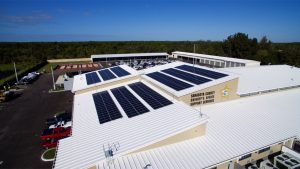
Energy and Greenhouse Gas Emissions
The energy and greenhouse gas emissions credit assesses movement towards a zero emissions city and reducing environmental and economic harms associated with excessive energy use.
Sarasota County achieved an energy performance score based on the total annual per capita scope 1 and scope 2 greenhouse gas emissions from all sectors measured as 7.68 MTCO2 (2019). Other points were achieved through power surety and resiliency initiatives. Sarasota County has identified critical locations where electric services are needed during a weather event to ensure those facilities maintain power. In addition, the county uses a 3rd party device with a cellular uplink to a browser-interfaced program to monitor accounts, status of generators, fuel levels, battery voltage and receive alerts.
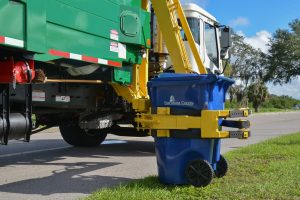
Materials and Resources
The intent of the materials and resources credit is to reduce construction and demolition waste disposed of in landfills and incineration facilities by recovering, reusing, and recycling materials.
Sarasota County received points based on our solid waste management and special waste streams. Sarasota County ordinances ensure that there is effectively 100% waste management coverage of all types of buildings or population by a contracted franchise hauler within the unincorporated County. In 2022, the Sarasota County Board of County Commissioners accepted the Solid Waste Master Plan Roadmap. Through the Roadmap, Sarasota County strives to provide exceptional services that are convenient, reliable, cost effective, safe, and environmentally sustainable. The Household Hazardous Waste (HHW) program has also flourished into three permanent chemical collection centers – neighborhood and community-based collection events, and weekly curbside collection of used oil, used oil filters, and electronics which is collected by the franchise curbside solid waste hauler.

Quality of Life Performance
The quality of life credit describes the population demographics and housing characteristics of the area.
Sarasota County achieved the quality of life performance score by tracking and measuring the key indicators of education, equitability, prosperity, health, and safety related to elevating the living standards of all people in the county.
Innovative Performance
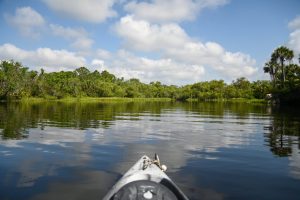
Regional Priority

What Sarasota’s LEED certification means for the county’s future
While the county scored well in some areas, such as energy and greenhouse gas emissions performance and resilience planning, it has room for improvement in others like water efficiency and materials and resources. For this, LEED offers a potential roadmap for the future.
This certification process and data will help us to better understand our performance in these areas and identify opportunities for improvement. Enhancing current efforts, determining new initiatives, and collaborative planning will help us continue intentional projects that will strengthen Sarasota’s reputation as a sustainability leader, while also improving the overall quality of life for our residents.
About Sarasota County Sustainability
Sarasota County has a long history of commitments to sustainability for both its own operations and the community. The Sustainability staff develop programs and encourage actions by citizens, businesses, and institutions that improve the long-term environmental, social, and economic viability of Sarasota County. For more information, visit scgov.net/government/sustainability/sustainability, call 941-861-5000, sign up for the monthly Sustainability newsletter, and connect on Twitter, Facebook, and Instagram.
More about the U.S. Green Building Council
The U.S. Green Building Council (USGBC) is committed to a healthy, resilient and equitable future for all through the development of green buildings, cities and communities. For more than 20 years, USGBC has been advancing green building practices through the development of LEED, the world’s most widely used green building program. With the support of thousands of members, volunteers and partners, USGBC provides robust green building education courses, a rigorous professional credentialing program, and advocates for effective public policies. It convenes an international network of green building and sustainability leaders through the annual Greenbuild International Conference & Expo, and forward thinking programs, including the Center for Green Schools. For more information, visit usgbc.org and connect on Twitter, Facebook, Instagram and LinkedIn.
 5
5
